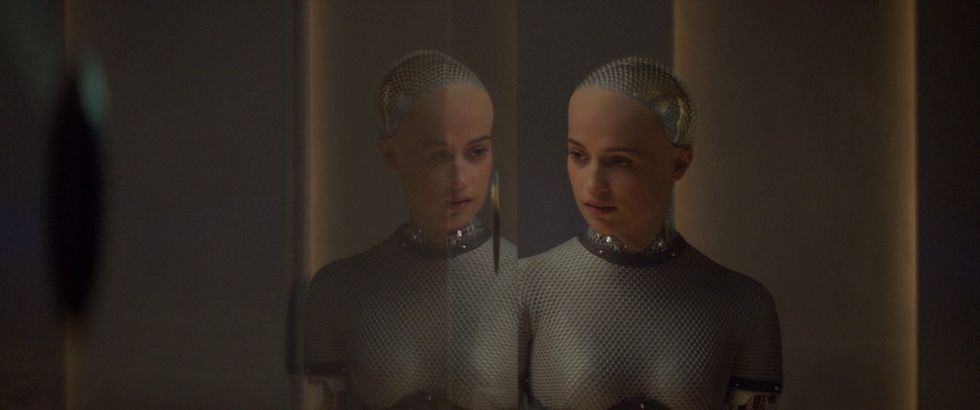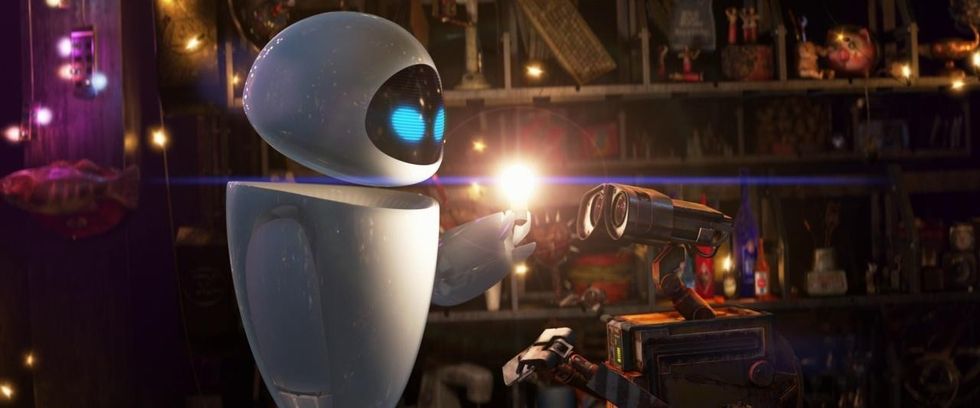Why Is Female Entertainment Considered "Low Art"?
Who decides what matters in the conversation of cinema?

At NFS, we believe that filmmaking is a place where everybody, regardless of gender identity or artistic taste, can come together to make great art. Unfortunately, not everybody in the industry is welcomed with open arms to express themselves fully without being mocked for their preferences. This can most commonly be seen with media that is targeting a female audience.
As a woman who grew up with the Twilightfranchise, I tried to hide my enjoyment of the hyper-romanticized toxic love between a vampire and an average human girl because I saw how relentlessly mocked women who liked the films were by older male audiences. They deemed the franchise as unwatchable, discrediting indie filmmaker Catherine Hardwicke's direction on the first film. At some point, it became a trend to hate films that were targeting teenage girls. The hate towards the franchise was one of the many instances in that women were taught to be ashamed for their interest in specific types of media, and that shame still exists today.
Why is it okay to outwardly criticize and bash female-focused media or dismiss it altogether, while male-focused media flourishes and is praised as high art?
The conversation of female-focused media has considered the work to be low art, but what is actually being said about this type of media? It’s a phenomenon that has been going on quietly for years, but one fundamental question has become unavoidable. At a time when gender stereotypes are supposed to be breaking down, why is there still a divide in entertainment?
Let’s get into it.
Why Is Female Media Considered Low Culture?
When we look at what is considered high art and what is low art in cinema, we often find that gender influences that scale. While Star Warsand gangster films like The Godfather are considered high art, films based on Jane Austin novels and The Devil Wears Pradaare considered low art and unimportant to filmmaking and storytelling.
Rom-coms like When Harry Met Sally and Someone Great don’t always move the needle of cultural importance, despite their popularity within female communities, while big-budget action films likeTop Gun are considered instant classics that everyone is expected to celebrate.
What the culture considers frivolous vs. important is a reflection of gender stereotypes that have been upheld by an industry that has pushed women out of important roles once filmmaking became a lucrative business.
Stories about women and girls are traditionally seen purely for female audiences, while male interests are viewed as the standard or default. There is also a longstanding industry assumption that women will watch entertainment that is oriented toward men, but men will not watch media that is marketed toward women.

Women are essentially trained to embrace male-focused media, while men are not expected or encouraged to embrace any female-focused media. If they do, then their peers look down on them for enjoying “chick flicks.”
Male interest dominates entertainment, which is not surprising since there is still a lack of female voices behind the camera. Why are women’s lives and concerns deemed superficial when shown on a screen when men can casually show their lives or their fantasies on screen?
What is the difference betweenCaptain America: The First Avenger andShe-Hulk? They both focus on the protagonist figuring out how to balance their newfound powers, their jobs, and their budding romance with a coworker. Still, She-Hulk was heavily criticized for degrading the quality of the Marvel Cinematic Universe because she twerked, while we all laughed in theaters when Captain America declared that he does have “America’s ass.”
I have trouble finding the reason why one of these is acceptable while the other is deemed “unwatchable.”
This is a symptom of how we talk about films in our culture.

How We Talk About Art Matters
The negative attitude toward female-focused media is often a reflection of how we talk about gender and it is affiliated with films and TV.
Oftentimes, when women are fans of specific work that evoke a specific emotion, this creates an image of the overly emotional and delusional fan who cannot recognize why a piece of work is good or bad.
In contrast, men are often driven by a granular analytical appreciation for a piece of work rather than an emotional response. Rather than liking something because it speaks to a specific feeling, men tend to look at work from a technical standpoint to legitimize why they think the work is good. It also promotes a sense of superiority to their taste. That superiority leads to a delegitimization of the art women like because there is a belief that women can’t see what makes the art they like "valuable."
While there is nothing wrong with liking a film for its technical excellence, there is a problem with gatekeeping what is considered good and bad cinema based on those technical points that are used to validate art.
We see this trait in countless films about gatekeeping art. In High Fidelity, the men who work at the record shop are often combative towards outsiders who don’t know as much as they do about music. Rather than sharing the joy of music, the conversation about the art becomes a competition of who loves it more. At some point, the elitism about the subject isn’t about what they love about the art, but about what they don’t want to tolerate.

This is a trait I have talked about before with the Film Bro and their unwillingness to explore works outside of critically acclaimed films. Just because something is a technical achievement doesn’t immediately mean it’s a great film, and because something is not critically acclaimed does not make it a bad film. That’s a narrow perspective. Who is to say that a young girl has worse taste in films than a 30-year-old man? Who is to say that anyone's taste is better than another person's?
Watching films with an analytical eye is great, but it is okay to watch a film for the feeling it brings you. Feeling emotions while watching a film or TV show isn’t a gender concept. It’s a human condition.
Being educated about an art form is not a bad thing, by any means, but that level of superiority can become a gatekeeping tool that shames people for enjoying movies that are not technical achievements. I’m guilty of it, and I have to constantly check myself to watch films that don't directly appeal to me but are recommended to me by friends and family.
Being a film enthusiast is about watching films outside of your curated list. Watch films that are recommended by women in the industry and seek media that emotionally fulfill you. You can always revisit these works and find why they do matter in the conversation about great cinema.

How to Close the Gender Gap in Entertainment
Closing the gender gap in the entertainment industry is an uphill battle for women, but it’s not impossible.
As audience members, we can start by watching and supporting female filmmakers.
While that sounds easy, films made by women are few. According to the Center for the Study of Women in Television and Film at San Diego State University, women made up just 39% of all directors, writers, producers, executive producers, editors, and cinematographers working on independent films that screened or streamed at high-profile film festivals in the US from July 2021 to June 2022.
The same research facility also discovered that women in the industry only held 25% of jobs behind the camera in 2021.
The numbers could see a slight decline this upcoming year. Warner Bros. Discovery CEO David Zaslav axed many projects this fall that centered on stories about women, people of color, and queer communities. This alienation of diverse stories on screen and behind the camera play towards Zaslav’s desire to appeal to audiences in middle America.
It doesn’t help that Zaslav fully believes in gender programming when he revealed a demographic during an earnings call in August that showed that HBO “skews male” while Discovery+ “skews female.”

How we talk about media also needs to be re-evaluated. Not only do we need to hire more women to create well-rounded, realistic characters, but we also need female-led entertainment to be marketed as entertainment for everyone.
If male-focused media is marketed to everyone, then why can’t female-focused media be marketed in the same way?
What it boils down to is how we talk and interact with media that is classified as female-centric. We must actively try to acknowledge our biases and seek out films and shows made by women in the industry. If you don’t enjoy it, then you don’t enjoy it, but do not dismiss its existence from the culture.
Everyone deserves to have their stories told in large and exciting ways. Representation matters, so, please, don’t shame people for liking a piece of media.
Source: The Take













